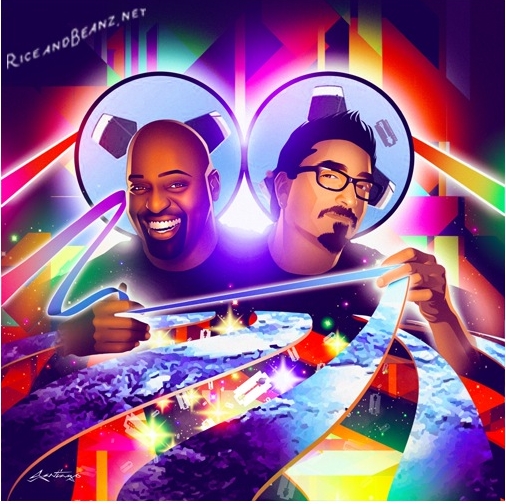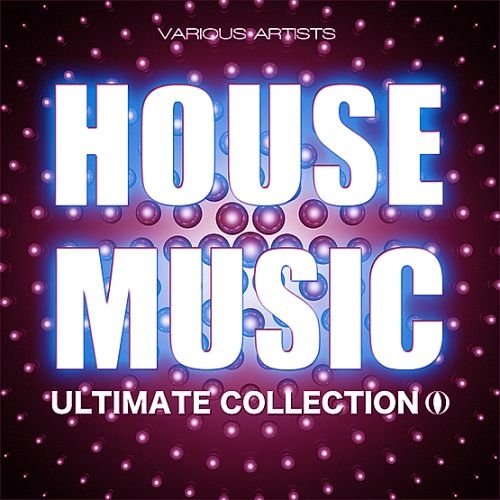Details:
House music is a genre of electronic music created by club DJs and music producers in Chicago in the early 1980s. Early house music was generally characterized by repetitive 4/4 beats, rhythms mainly provided by drum machines, off-beat hi-hat cymbals, and synthesized basslines. While house displayed several characteristics similar to disco music, it was more electronic and minimalistic, and the repetitive rhythm of house was more important than the song itself.House music became popular in Chicago clubs in 1984. It was pioneered by figures such as Frankie Knuckles, Phuture, Kym Mazelle, and Mr. Fingers, and was associated with African-American and gay subcultures. House music quickly spread to other American cities such as Detroit, New York City, Baltimore, and Newark – all of which developed their own regional scenes. In the mid-to-late 1980s, house music became popular in Europe as well as major cities in South America, and Australia.Early house music commercial success in Europe saw songs such as "Pump Up The Volume" by MARRS ;(1987), "House Nation" by House Master Boyz and the Rude Boy of House (1987), "Theme from S'Express" by S'Express ;(1988) and "Doctorin' the House" by Coldcut ;(1988) in the pop charts. Since the early to mid-1990s, house music has been infused in mainstream pop and dance music worldwide. In the late 1980s, many local Chicago house music artists suddenly found themselves presented with major label deals. House music proved to be a commercially successful genre and a more mainstream pop-based variation grew increasingly popular. House music in the 2010s, while keeping several of these core elements, notably the prominent kick drum on every beat, varies widely in style and influence, ranging from the soulful and atmospheric deep house to the more minimalistic microhouse. House music has also fused with several other genres creating fusion subgenres, such as euro house, tech house, electro house and jump house.Artists and groups such as Madonna, Janet Jackson, Paula Abdul, Aretha Franklin, Bananarama, Diana Ross, Tina Turner, Whitney Houston, Steps, Kylie Minogue, Dannii Minogue, Björk, and C+C Music Factory all incorporated the genre into their work in the 1990s and beyond.[example's importance?] After enjoying significant success in the early to mid-90s, house music grew even larger during the second wave of progressive house ;(1999–2001). The genre has remained popular and fused into other popular subgenres, for example, ghetto house, deep house and tech house. As of 2016, house music remains popular in both clubs and in the mainstream pop scene while retaining a foothold on underground scenes across the globe.Various disco songs incorporated sounds produced with synthesizers and electronic drum machines, and some compositions were entirely electronic; examples include Giorgio Moroder's late 1970s productions such as Donna Summer's hit single "I Feel Love" from 1977, Cerrone's "Supernature" (1977),Yellow Magic Orchestra's synth-disco-pop productions from [i]Yellow Magic Orchestra ;(1978), Solid State Survivor ;(1979), and several early 1980s disco-pop productions by the Hi-NRG group Lime.Soul music and disco influenced house music. As well, the audio mixing and editing techniques earlier explored by disco, garage music and post-disco DJs, record producers, and audio engineers such as Walter Gibbons, Tom Moulton, Jim Burgess, Larry Levan, Ron Hardy, M & M, and others was important. These artists produced longer, more repetitive, and percussive arrangements of existing disco recordings. Early house producers such as Frankie Knuckles created similar compositions from scratch, using samplers, synthesizers, sequencers, and drum machines.The electronic instrumentation and minimal arrangement of Charanjit Singh's Synthesizing: Ten Ragas to a Disco Beat ;(1982), an album of Indian ragas performed in a disco style, anticipated the sounds of acid house music, but it is not known to have had any influence on the genre prior to the album's rediscovery in the 21st century.Rachel Cain, co-founder of an influential Trax Records, was previously involved in the burgeoning punk scene and cites industrial and post-punk record store Wax Trax! Records as an important connection between the ever-changing underground sounds of Chicago. As most proto-house DJs were primarily stuck to playing their conventional ensemble and playlist of dance records, Frankie Knuckles and Ron Hardy, two influential pioneers of house music, were known for their unusual and non-mainstream playlists and mixing. The former, credited as "the Godfather of House", worked primarily with early disco music with a hint of new and different music (whether it was post-punk or post-disco)but still enjoying a variety of music, while the latter produced unconventional DIY mixtapes which he later played straight-on in the music club Music Box, boiling with raw energy. Marshall Jefferson, who would later appear with the Chicago house classic "Move Your Body (The House-Music Anthem)", (originally released on Chicago-based Trax Records) got involved in house music after hearing Ron Hardy's music in Muzic Box.




